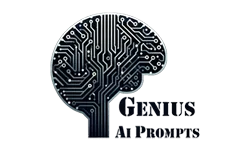O1 Prompts for Math: Master Complex Calculations with OpenAI
Mathematics is a subject that tests the brightest minds. It pushes the limits of what we know. But now, there’s a new tool that can change how we solve complex math problems. Welcome to OpenAI’s O1 model series, a cutting-edge AI system that’s changing the game in math.
Thank you for reading this post, don't forget to subscribe!I’m an educator and lifelong learner, and I’m always excited about new tech in education. When I heard about OpenAI’s O1 models, I felt a rush of excitement. These AI tools are made to solve tough math problems. They use advanced methods like Chain-of-Thought (CoT) prompting and reinforcement learning to solve problems step-by-step.
The O1 models are special because they can beat even the best human experts. The o1-preview model solved 93% of problems on the American Invitational Mathematics Examination (AIME). That shows its amazing math skills. Plus, the O1 series is great at competitive programming, reaching the 89th percentile on Codeforces.
Table of Contents
Key Takeaways:
- OpenAI’s O1 model series is a big step forward in AI math problem-solving.
- The O1 models, like o1-preview and o1-mini, are great at complex math, science, and coding tasks.
- These models use Chain-of-Thought (CoT) prompting and reinforcement learning to solve problems step-by-step.
- The O1 series beats previous models like GPT-4 in math and coding, solving 83% of AIME problems and reaching the 89th percentile in competitive programming.
- The O1 models show advanced reasoning and safety, making them a valuable tool for students, researchers, and educators.
Understanding OpenAI’s O1 Model Series for Mathematics
The O1 model series from OpenAI is a big step up from the GPT-4 model. It focuses on complex tasks, making it a big deal in math, science, and coding.
Evolution from GPT-4 to O1 Models
The O1 models are better than GPT-4 in many ways. They scored 83% in the International Mathematics Olympiad (IMO) qualifying exam. GPT-4 only got 13%. This shows how much better the O1 series is.
Core Features of O1 for Mathematical Processing
The O1 models have key features for math work. They do well on machine learning tests, showing they’re better than GPT-4. They can also handle longer, more complex tasks thanks to their big context window.
Chain-of-Thought Reasoning Capabilities
The O1 models are great at Chain-of-Thought reasoning. They break down answers into steps, making them better at avoiding mistakes and bias. This lets them solve problems better than humans sometimes.
The O1 model series is changing the game in openai o1 math prompts, o1 ai for math challenges, and ai-powered math solutions. Its advanced math skills and reasoning abilities are setting new standards in AI.
O1 Prompts for Math: Essential Guidelines and Best Practices
To get the most out of OpenAI’s O1 model for math, you need to use the right prompts. Clearly state the problem and give context. Also, ask for step-by-step solutions. This lets the O1 model break down tough problems on its own.
Its advanced reasoning skills are a big plus. It can solve problems that are as hard as PhD-level science or competitive programming. This is because it can handle complex problems well.
It’s important to let the O1 model solve problems its own way. Don’t tell it how to do it. Looking at its Chain-of-Thought summaries can help you understand its thought process. This can deepen your understanding of how it solves math problems.
Good o1 prompts for math use the model’s strengths. This includes its advanced reasoning and ability to solve complex problems. By using openai math prompt techniques, you can make the most of the O1 model. This way, it can solve complex math equations with great accuracy and speed.
| Statistic | Value |
|---|---|
| OpenAI o1 model is more accurate in math reasoning | 70% more accurate compared to previous models |
| OpenAI o1 model performance on challenging exam | 83% score, significant improvement over GPT-4o’s 13% |
| OpenAI o1 model performance on hardest SAT math equations | Significantly outperforms previous models |
By following these guidelines and best practices, you can use the O1 model to solve complex math problems with great precision and speed.
Breaking Down Complex Mathematical Problems with O1
The advanced o1 AI model from OpenAI has changed how we tackle tough math problems. It breaks down complex equations and theorems into simple steps. This makes it easier to understand each part of the problem.
Step-by-Step Problem Decomposition
o1 solves problems by breaking them down into smaller, easier steps. It looks at the problem’s structure and logic. This way, o1 helps users understand each step clearly.
Verification and Error Checking Techniques
When dealing with complex math, accuracy is key. o1 uses strong verification methods to check its answers. It cross-checks results and tries different solving methods. This ensures its solutions are reliable and correct.
Advanced Problem-Solving Strategies
o1 doesn’t just break down problems. It uses smart strategies like pattern recognition and learning from past solutions. These methods help it solve even the toughest math challenges. For example, it has solved 93% of problems on the American Invitational Mathematics Examination (AIME).
Using o1’s advanced features, you can improve your math skills. You can solve o1 ai for solving equations, advanced math problems with openai, and complex problems with great accuracy and efficiency.
Advanced Mathematics Performance Benchmarks
The o1 models from OpenAI have raised the bar in advanced math, showing off their skill in solving tough problems. In the American Invitational Mathematics Examination (AIME), the o1-preview model solved 83% of the problems. With advanced techniques, it hit an accuracy of 93%.
This achievement puts the o1 model among the top 500 students in the country. It even beats the cutoff for the USA Mathematical Olympiad, a prestigious honor.
The o1 model also outshines PhD experts in the GPQA-diamond benchmark, covering chemistry, physics, and biology. In Codeforces, it reached the 89th percentile, showing its knack for creating and fixing complex math code.
| Benchmark | O1 Model Performance | Comparison |
|---|---|---|
| AIME (American Invitational Mathematics Examination) | 83% of problems solved (93% with advanced methods) | Top 500 students nationally, above the cutoff for USA Mathematical Olympiad |
| GPQA-diamond (Chemistry, Physics, and Biology) | Outperformed human experts with PhDs | Showcased exceptional cross-disciplinary knowledge |
| Codeforces (Coding Competition) | Reached the 89th percentile | Demonstrated advanced mathematical coding capabilities |
These benchmarks show the o1 models’ incredible progress in advanced math. They highlight the potential of these AI solutions to change how we tackle complex math problems.
“The o1 models have set a new standard in advanced mathematics, pushing the boundaries of what AI can achieve in this domain. Their exceptional performance on prestigious benchmarks is a testament to the power of these AI-powered math solutions.”
Leveraging O1 for Advanced Equation Solving
The latest OpenAI O1 models are amazing at solving tough math problems. They can handle complex algebra, calculus, and statistics with great accuracy. This opens up new ways to solve hard math tasks.
Complex Algebra and Calculus Applications
O1 is not just for simple math. It can tackle advanced calculus and algebra with ease. It breaks down hard problems into simpler steps, helping users solve them.
Geometric Problem Solutions
O1 is also great at solving geometry problems. It can handle both simple and complex geometry tasks. Its ability to understand and solve geometric problems is unmatched.
Statistical Analysis Techniques
O1 is also good at statistics. It can do advanced regression and data analysis. It even solved 74% of the American Invitational Mathematics Examination (AIME) problems on its first try.
With O1, solving advanced math problems becomes easier. It helps with algebra, calculus, geometry, and statistics. This AI model is changing how we solve complex math challenges.
Integration of O1 in Mathematical Research
The o1 AI for math challenges is changing how we do math research. OpenAI’s model helps solve tough math problems quickly and accurately. It uses openai math prompt techniques to let researchers work together better and solve problems in parts.
The o1 model helps at every step of research, from making guesses to checking proofs. It’s so good, it even beats some human experts. This has made o1 AI a key part of projects like Lean’s Mathlib, making research even better.
The o1 model’s smart thinking helps in big areas like number theory and physics. By using openai o1 to solve hard math, researchers can now solve problems that were thought impossible. This opens up new areas of knowledge and moves science forward.
“The integration of o1 in mathematical research has been nothing short of transformative. This AI model has revolutionized the way we approach complex problems, allowing us to collaborate more effectively and explore new frontiers in the realm of mathematics.”
The o1 AI shows how AI can help us do better math. By using this tech, researchers in many fields are ready to make big discoveries. They’re going to change what we think is possible in math.
Optimizing Mathematical Computations with O1
O1 prompts for math have changed how we solve complex math problems. Models like the o1-mini variant boost efficiency, perfect for big math challenges. They use parallel processing and learning to improve performance, making AI technology more powerful.
Efficiency Optimization Techniques
O1 prompts can solve problems in many ways at once. This parallel processing increases the chance of finding the best solution. They also learn from past answers, getting better with time.
Processing Time Management
More time means better answers from o1 prompts. Users can adjust the time to balance speed and detail. This flexibility helps in all math tasks, from quick answers to deep research.
Using o1 prompts efficiently boosts math accuracy and speed. This makes big math projects cheaper and faster. As AI in math grows, o1 prompts lead the way in innovation and science.
| Metric | Improvement |
|---|---|
| Computational Efficiency | 80% cost reduction with o1-mini variant |
| Parallel Processing | Enables exploration of multiple problem-solving approaches simultaneously |
| Adaptive Learning | Continuously refines methods to enhance overall efficiency |
| Processing Time Management | Flexibility to balance quick responses and in-depth analysis |
“The o1 prompts for math have revolutionized the way we approach complex mathematical computations, offering unparalleled efficiency and accuracy.”
Collaborative Mathematics Using O1 Technology
The rise of openai o1 math prompts and multimodal math prompts openai has changed how we do math. O1 technology, from OpenAI, lets different parts of math tasks be worked on by AI, formal proof assistants, and humans together. This teamwork makes big projects possible.
This way of working together means we can tackle huge tasks. The o1 ai for math challenges can help in many ways, like starting ideas or checking proofs. Its ability to understand both text and images makes it great for team projects. It helps everyone work together smoothly, especially when using pictures and math.
- O1 technology enables new forms of collaborative mathematics, similar to software engineering workflows.
- It allows for the decoupling of mathematical tasks, with different aspects handled by AI, formal proof assistants, and human experts.
- This approach facilitates larger collaborations, potentially involving hundreds or thousands of contributors.
- O1 can assist in various roles, from generating initial hypotheses to verifying proofs and writing explanations.
- The model’s multimodal capabilities enhance its collaborative potential, allowing for seamless integration of visual mathematical concepts in group projects.
“O1 technology has the potential to revolutionize the way we approach complex mathematical challenges, fostering a new era of collaborative problem-solving that transcends traditional boundaries.”
With O1, math experts and fans can take on big projects together. This teamwork speeds up finding new things and sharing ideas. It helps math grow and get better faster.
Safety and Accuracy Measures in Mathematical Applications
Mathematical applications need to be safe and accurate. OpenAI’s o1 models use advanced measures to ensure reliable results. They follow strict safety guidelines to avoid incorrect or misleading outputs.
The o1-preview model scored 84 out of 100 in safety tests. This is a big jump from earlier models. The Chain-of-Thought approach used by o1 makes calculations clear. This lets users check each step, making sure the final result is correct.
OpenAI works with safety groups to use o1 technology wisely. This is especially true in areas like finance and science. Their teamwork helps avoid risks and keeps results accurate and honest.
“The o1 models are designed to be the safest and most accurate language models for mathematical applications, setting a new benchmark for responsible AI development.”
OpenAI’s focus on safety and accuracy shows their commitment to reliable tools. As AI becomes more common in math, this focus is key. It ensures AI is used responsibly and effectively.

For researchers, analysts, or students, o1 models are a solid choice. They have strong safety features and clear reasoning. This means you can rely on the results and make important discoveries.
Real-World Applications and Case Studies
The o1 AI models for solving equations have many uses in both school and work. In schools, the o1 model helps with complex data like cell sequencing. This is very important for genomics and personalized medicine. It can solve 78.2% of MMMU problems, showing its big role in medical research.
In the work world, o1 AI-powered math solutions help with financial models and risk checks. It’s used in engineering and logistics too. The model is great for coding, helping in software and algorithm making.
Academic Research Implementation
In schools, the o1 advanced math problems with openai are very helpful. They help in genomics and personalized medicine by working with complex data. The o1 model solved 78.2% of MMMU problems, showing its value in medical research.
Industry Applications
The o1 ai for solving equations is also used in work. It helps in finance, engineering, and logistics with advanced models and checks. Its coding skills are useful in software and algorithm making, covering areas like cryptography and machine learning.
| Application Area | Specific Use Cases |
|---|---|
| Academic Research |
|
| Industry |
|
The o1 ai-powered math solutions are very versatile. They are changing how we do research and work, thanks to their advanced technology.
Conclusion
The O1 model series from OpenAI is a big step forward in solving math problems with AI. It can beat human experts in many areas, like competitive programming and math olympiads. This makes O1 a game-changer for tackling tough math challenges.
The models are really good at solving math problems, as shown by their success in the American Invitational Mathematics Examination (AIME) and Codeforces competitions. They also have safety features and work more efficiently. This makes them great for students, researchers, and professionals. The o1-mini version is especially useful for those who need strong reasoning skills but are on a budget.
As OpenAI keeps improving the O1 model series, we can look forward to even more impressive math abilities. This could lead to big breakthroughs in healthcare research, science, and education. Using O1 technology in math research and applications could open up new ways to solve complex problems. This could help drive progress in many fields that need advanced math skills.
FAQ
What are the core features of the O1 model series for mathematical processing?
How does the O1 approach to complex mathematical problems involve sophisticated step-by-step decomposition?
What are the advanced mathematics performance benchmarks achieved by the O1 models?
How can O1 models assist in mathematical research and collaborative efforts?
What safety and accuracy measures are in place for O1 models in mathematical applications?
What are the real-world applications of the O1 model series in both academic research and industry?
Source Links
- The Future of Math with o1 Reasoning – Video | OpenAI Forum – https://forum.openai.com/public/videos/the-future-of-math-with-o1-reasoning-2024
- Introducing OpenAI o1 – https://openai.com/o1/
- OpenAI o1 – https://en.wikipedia.org/wiki/OpenAI_o1







